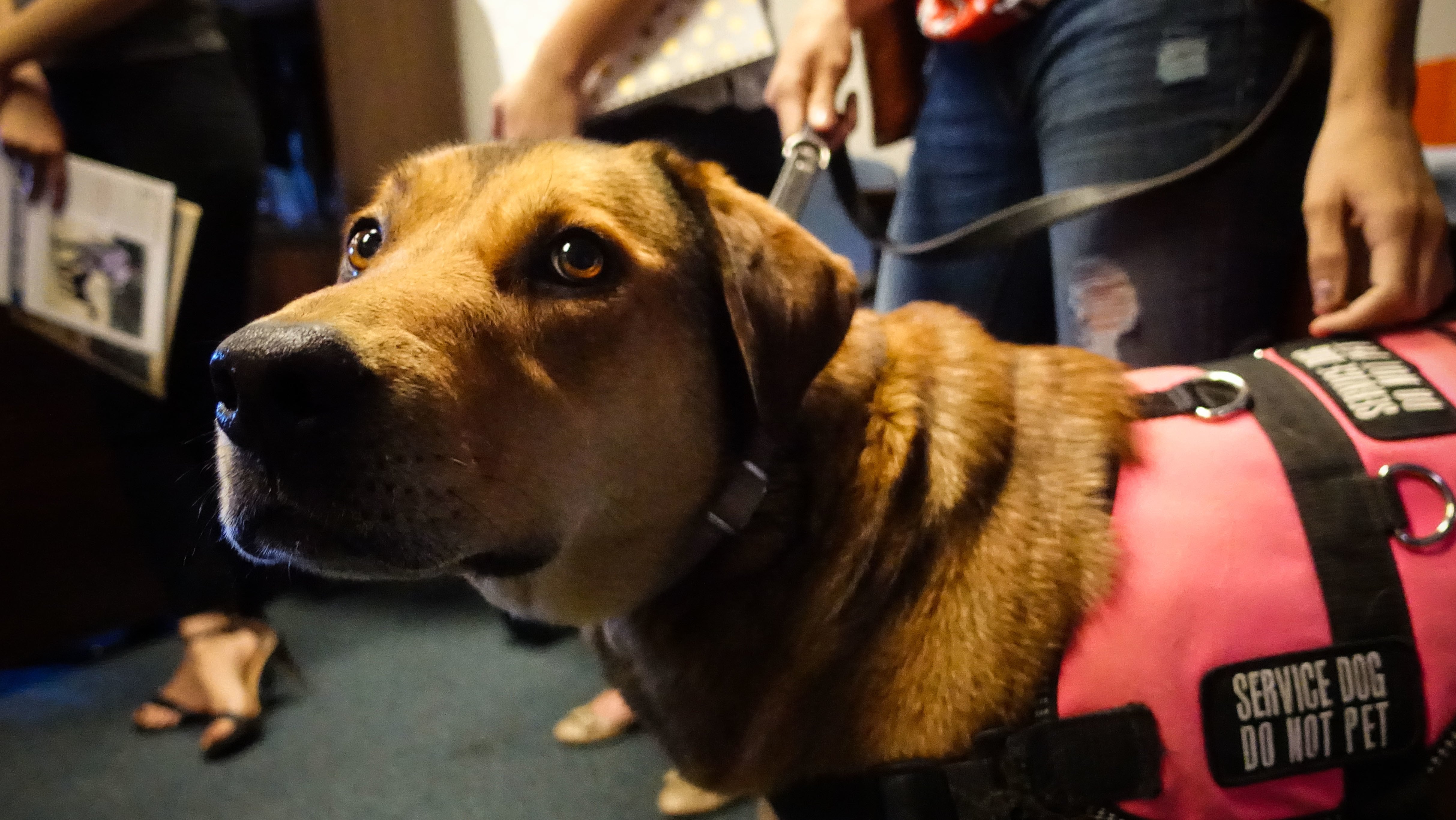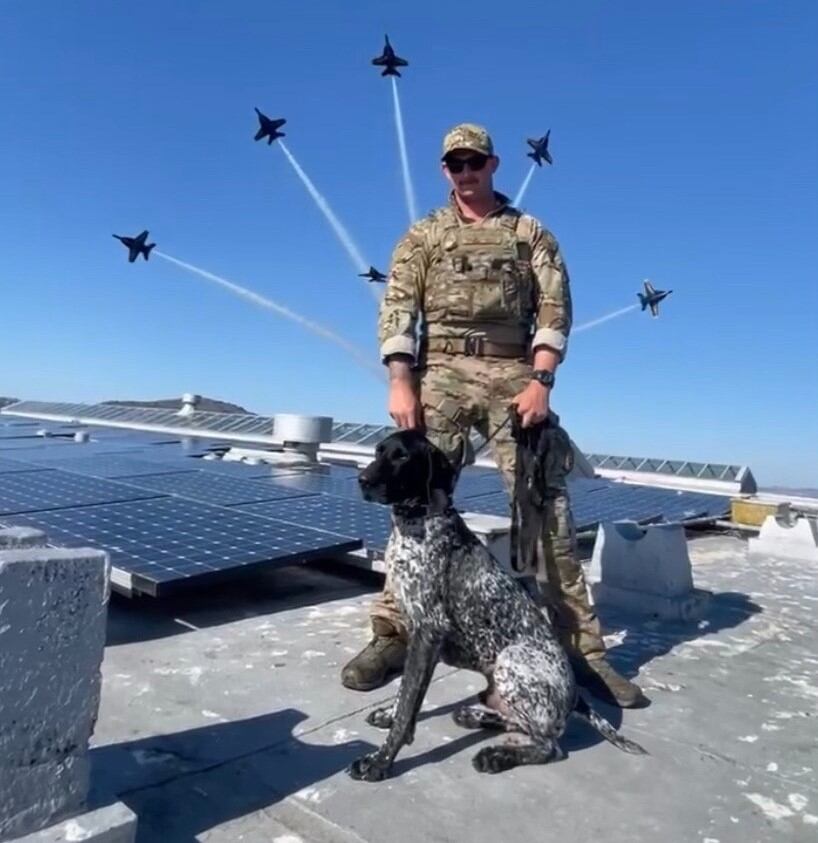Military working dogs that are killed in action or perform an exceptionally courageous act may be eligible to receive a new decoration thanks to a provision included in the House version of the annual defense bill in Congress.
With the award’s creation, military dogs that have long worked alongside troops on and off the battlefield would be eligible to receive a formal, canine-specific decoration for their service. Dogs first earned an official role as four-legged U.S. fighters with the instatement of the Army K-9 Corps in 1942, though they had worked alongside their two-legged counterparts long before.
“Service dogs are not equipment,” Rep. Elissa Slotkin, D-Mich., who proposed the measure in Congress, told Military Times. Slotkin added that her life was consistently protected by working dogs during her time in Iraq with the CIA.
Slotkin introduced the amendment to the House version of the 2024 fiscal year National Defense Authorization Act, which passed in July, as a means of throwing courageous canines a bone. The measure is not currently in the Senate version of the annual defense bill and faces a long road ahead before it makes it out of the doghouse to be signed into law. Slotkin noted that she was named last week to the conference committee that will look to bridge the gap between the two versions.
RELATED

Current forms of Pentagon recognition for military working dogs often come in conjunction with honors given to their handlers. A Military Working Dog Handler Certificate of Commendation may be awarded to handlers “for acts of valor or meritorious achievement on or after 13 August 2018, by such handlers and their working dog,” according to an Air Force memo. The certificate includes the handler’s information and may also include the military working dog’s name. Service members told Military Times they have also seen military canines awarded achievement medals in an unofficial capacity.
Six-year-old year old Rosco, a Belgian Malinois patrol drug detector dog, has been partnered with Air Force Staff Sgt. Brittney Turco since January.
“He’s the one doing most of the work using his … capabilities of a dog that a human can’t do,” said Turco, a canine handler with the 802nd Security Forces Squadron at Joint Base San Antonio-Lackland, Texas. “I would say they are the true heroes at the end of the day.”
Approximately 275 dogs are trained each year at Lackland, where an internal breeding program is used to produce 10% to 15% of military working dogs, Christa D’Andrea, a spokesperson for the 37th Training Wing, told Military Times. Dogs at Lackland, also home to the 37th Training Wing’s 341st Training Squadron, go on to support DoD missions and other government agencies like the Secret Service.
There are currently around 1,600 military working dogs in service in various assignments around the world, D’Andrea said, with 77% of those roles serving in explosive detection capacities.
The measure to create the military working dog decoration is also included in a bill Slotkin introduced earlier this summer. The congresswoman, who sits on the House Armed Services Committee, has previously championed legislation for military dogs, sponsoring in 2021 the Puppies Assisting Wounded Servicemembers for Veterans Therapy Act as a means of connecting veterans with service dogs in their communities.
Other possible medals awarded beyond the scope of the Defense Department include the Dickin Medal from the People’s Dispensary for Sick Animals and those from the group Animals in War & Peace.
The nonprofit American Humane’s Hero Dog Awards offers another opportunity for pooches in the armed forces to earn an accolade for their service. Four-year-old German shorthaired pointer Buda is this year’s top military dog in the competition.
The black and white K-9 has participated in over 185 operational deployments and engagements, including performing safety sweeps of vessels, security at events like Super Bowl LVI in Los Angeles and serving in response to bomb threats.

Buda and his handler, Petty Officer First Class Chase Leamer, 29, a maritime enforcement specialist with the Coast Guard’s Maritime Security Response Team West, have worked together for about two years.
“It would be awesome to have these dogs awarded as much as the normal service member is awarded for how hard they work,” Leamer told Military Times.
Slotkin’s office said this legislation, however, may not apply to the Coast Guard. Instead, Coast Guard pups fall under the Department of Homeland Security and are typically termed “explosives detection dog” or “explosives detection canine.”
“America’s bravest military men, women and military working dogs give so much to our country and need our support. Their sacrifices should be recognized,” Dr. Robin Ganzert, president and CEO of American Humane, told Military Times in a statement. “We support efforts in Congress to create a new decoration for military working dogs who are killed in action or who perform courageous acts. It’s the right thing to do.”
Jonathan is a staff writer and editor of the Early Bird Brief newsletter for Military Times. Follow him on Twitter @lehrfeld_media





